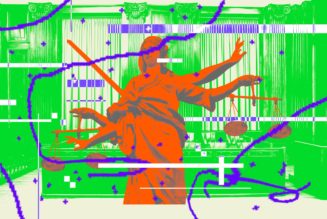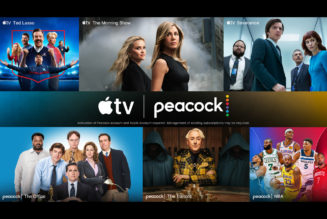

World of Warcraft, or WoW, is like the Red Hot Chili Peppers of the massively multiplayer online roleplaying genre: not only is it still going strong but it’s also somehow even bigger than you thought. World of Warcraft’s current numbers aren’t public, but one recent educated guess came in at 7 million paying subscribers, which, at $15 / month, would make the game a billion-dollar earner by itself. Its developer, Blizzard, merged with Activision in 2008, and Microsoft gobbled up both companies in 2022, but World of Warcraft remains a load-bearing spine of the newly formed corporate turducken. The game that redefined gold mining for the 21st century is still a 19th-century gold mine for its landlords.
It’s also thriving in a subscription ecosystem that it helped to legitimize. World of Warcraft debuted in 2004, during an era when you still had to buy games in boxes from stores. The runaway success of Blizzard’s always-on portal to Azeroth proved that, for the right product, studios could charge a recurring fee beyond the initial cost of the core game’s (at the time) formidable five installation CDs. Here, in the enshittified 2020s, we’ve all grown used to renting our culture by the month, but it was genuinely pathbreaking for World of Warcraft to have 12 million subscribers at its peak in 2010. It didn’t invent the monthly model, which had already gained traction in games like Ultima Online and EverQuest during the dawn of the massively multiplayer online roleplaying game (MMORPG) genre. But World of Warcraft’s success took that recurring charge mainstream and helped popularize the unassailable business logic that having your customers pay you once was worse than having them pay you until they decided or remembered to stop.
As World of Warcraft turns 20, its enduring financial success arguably pales in comparison to its cultural significance. I asked Angela Washko, a new-media artist who staged several notable performance pieces inside the game world, what she considered World of Warcraft’s biggest contribution, for better or worse. “World of Warcraft expanded the notion of what public space was,” she told me. “I saw the bonds created amongst members of my guilds moving beyond the game space, as players flew across the country to meet each other.” Everyone I talked to about World of Warcraft’s legacy seemed to mention someone or other getting married, either in the game itself or here in reality after meeting in the game. “I think the degree of immersion and dissolving of the boundary between ‘real life’ and ‘fantasy’ within World of Warcraft was really a turning point in computing culture,” Washko said, adding that World of Warcraft “changed the conversation around video games from being something that was ‘an escape from everyday life’ to something that was an extension of one’s social life and happened to take place in a virtual environment.”
Through her own work, Washko also explored the less savory side of a fantasy game populated by real people; her Council on Gender Sensitivity and Behavioral Awareness in World of Warcraft involved traveling from town to town to educate passersby about feminism and discuss how the game’s dominant culture often created a hostile environment for its marginalized players. I recalled my own playing days, when you could be flying into a town on your hippogryph, minding your own business, only to be deluged by a wave of sewer-grade hate speech on a public text channel. We now take it for granted that online spaces reflect the social dynamics of the people who occupy them, including and especially the problematic ones, but in many ways, World of Warcraft was the kobold in this particular coal mine.
I first encountered the Warcraft universe like many ’90s computer kids: as a series of top-down, real-time strategy games about economic management and cartoon fantasy violence. The world (lowercase) of Warcraft pitted the seemingly noble Alliance (humans, elves, dwarves, your Tolkienesque usual suspects) against the villainized Horde (orcs, trolls, and other stock monster-humanoids from the trope factory) in a vicious-with-a-touch-of-slapstick conflict spanning three main titles and numerous expansions between 1994 and 2003. If no one was using the phone, you could play against your friends over a modem. The series had a rich and goofy aesthetic of exaggerated proportions, saturated colors, and sarcastic jokes. The units that ran your economy were literal simpering peons, which gave everything a barrel-shaped, vaguely comedic flavor that played well against the high-gloss cinematic interludes that would become Blizzard’s calling card.
Flush with revenues from its flagship series, Blizzard began exploring how it might expand Warcraft’s popular lore into other types of games. First, a point-and-click game called Warcraft Adventures — a late-1990s attempt at LucasArts-style vintage puzzle-solving in a cel-shaded take on the mythos — was infamously canceled for not meeting Blizzard’s internal release standards. (It also leaked, fully playable, not too long ago. Based on what I’ve seen, Blizzard was right.) Then, starting in 2001, an experimental team of a few dozen people got busy building a whole new engine that would bring Azeroth into 3D for the first time and let players meet, socialize, and slaughter skeletons together. It was a primordial example of the modern phenomenon where a corporation exploits its intellectual property by jumping genres and colonizing a new medium. It was also how they’d get me.
There are plenty of humbling ways to use Gmail’s internal search function, especially if you’ve had your account for roughly as long as World of Warcraft has existed. For one example, consider my collected personal correspondence surrounding World of Warcraft, from the peak years of its involvement in my life. When I queried “Warcraft before:2007/1/1,” it yielded about two dozen results, and together, they trace a blunt biography of that moment: landing a big new job; getting hella dumped; and “spending two months as an antisocial hermit,” as I told a friend in a Gchat in early 2006. (And how about World of Warcraft outliving Gchat?)
Reviewing the private record, it’s clear World of Warcraft tore through my life like an experienced raiding party of max-level grinders through the Deadmines. Admittedly, it was the kind of nymph-stage young adult life that was conceptually made of crepe paper and easily shredded by a video game. But something about the predictable rhythm of ordering junk food delivery after an exhausting workday, logging onto World of Warcraft, and hopping through some lush environment searching for herbs to make into sellable virtual potions just drew me in, one night after another.
This aspect of World of Warcraft — its knack for blurring the line between work and fun until the casual observer might not quite recognize it as either — often came up when I spoke to others about their experiences. “One thing WoW proved on a large scale is that people will turn a game into a job at the slightest provocation,” said Cory O’Brien, now a narrative and level designer for games like Redfall and HoloVista. “I remember spending hours and hours and hours grinding for dust so that I could enchant magic items. I remember smelting tin and copper to make bronze.” The elaborate crafting system in World of Warcraft, which often required materials gained through repetitive in-game labor, represented an explosion in the popularity of the now-ubiquitous mechanic where you, as a player, find some stuff and turn it into something else. “I still play all these more recent games like Minecraft, Project Zomboid, and Valheim that are literally just that crafting part,” O’Brien told me. “I spend so much time doing monotonous, repetitive tasks, for free, because somehow we have discovered that that’s fun.” Here, in 2024, it’s hard not to feel a vaguely sinister undertone to all of this as the rising tides of capitalistic overreach gamify the gig economy and hijack the natural human affinity for rewards for their own extractive purposes. But to Washko’s point about an expanded social life, one reason this all worked is that you were often helping out real people, with “legitimate needs” in the scope of the game. You were rarely just doing these things for yourself.
It wasn’t always exactly a waste, either. Andrew Simone, now a project manager in tech, attributes a large swath of his professional tool kit to skills he gained as a guild leader in World of Warcraft. “I actually stopped playing WoW largely because I felt like I was managing my guild more than my actual professional jobs,” he told me, proceeding to outline a frightening slate of workplace-flavored tasks that included interviewing prospective guild candidates, analyzing performance metrics from the game’s multiuser boss fights, dealing with in-guild sexual harassment, managing schedules across the world to hold meetings about all these things, writing guides for new members, and even “cultivating a kind of guild culture so people enjoyed being there,” which is an incredible thing to say about something that is already ostensibly a game. I know there are countless former guild leaders reading this and nodding along because their current workday docket has nothing on mediating a 10-way raiding party dispute over who should get the legendary enchanted pauldrons that just dropped.
On the other hand: plenty of it was a giant waste. I can’t tell you, back in the day, how many hours I was technically playing World of Warcraft but ignoring the game itself while I sifted through, rearranged, and tested various custom add-ons for its labyrinthine, fintech-ass user interface. World of Warcraft is a persistent software ecosystem with clients and servers and all kinds of data flying between them at all times — it’s just not necessarily exposed to every player in full. An entire cottage industry of user-created UI mods sprung up to assign repeatable actions to shortcut keys, or process advanced analytics from game logs like Simone would do for his guild, or implement an “automatic goblin therapist” who answers any incoming whispers to your character with an in-game implementation of the classic ELIZA protocol. Letting players scratch their own itches for how the game felt to play was also a clever way to limit complaints about the parts of it that weren’t as polished. I never got much into the game’s advanced content myself, but for those who did, pretty much the only way to follow the expected meta of guild raids was to use externally designed UI add-ons. World of Warcraft had the audacity to make players create their own custom cockpits for the game and ended up creating a kind of recursive procrastination where you could even distract yourself from your intended leisure activity. Anyone who’s ever rearranged the app icons on their phone knows just how ubiquitous this kind of time-consuming “metawork” has become.
Recently, I engaged in a more contemporary form of networked social entertainment — sitting around a big TV with friends, watching four strangers play a game together on Twitch. Just as things were picking up, the stream cut out, and an algorithmically inserted video ad began to play: it was for World of Warcraft. This was a group of mostly game designers, and before I had a chance to say anything, someone else piped in to mention World of Warcraft was 20 years old now — and formally impactful enough that working game makers still know its birthday.
Seeing that ad, writing this piece, none of it was enough to get me to reinstall World of Warcraft. (It’s a good thing the game never stooped to making you feed your in-game pets.) I didn’t really feel I had to replay the game to measure its influence because its influence is everywhere. Every monthly subscription, in-game economy, or digital “third place” where lives bleed into online connections owes it some spiritual recognition as prior art; those things have all become inescapable. Twenty years later, we are all living in the World of Warcraft.











